Bird Brain? How Pigeons identified Breast Cancer as well as Humans

PIGEONS WITH TRAINING did just as well as humans in a 2015 study testing their ability to distinguish cancerous from healthy breast tissue samples.
The pigeons were able to generalise what they learned correctly spotting tumors in unseen microscope images.
A team of scientists from the University of California Davis Medical Center and University of Iowa placed pigeons in a conditioning chamber fitted with a touch-screen monitor. Eight pigeons were shown images of benign or malignant tissue samples at three levels of magnification, at different orientations and at different brightness levels. The birds made a diagnosis by pecking on a blue or yellow rectangle on the screen, receiving a tasty reward for each tissue sample they correctly identified.
After two weeks of training, the pigeons reached a level of 85% accuracy – the pooling of decisions from a smaller group of birds led to an impressive 99% in diagnosis.
said Prof Wasserman, co-author of the study.
Despite the outputs of the study, it is unlikely the pathologists and the essential medical skills they have spend years acquiring will be replaced by pigeons. Whilst they have demonstrated an ability to judge and diagnose, a pigeon’s bedside manner remains to be proven to an audience beyond Prof Wasserman.
Yet, in substituting pigeons with artificial intelligence (AI), the interface between humans and technology becomes immediately more unclear. The RICS report The Impact of Emerging Technologies of the Surveying Profession[1], published by Remit Consulting, suggests 88% of a chartered surveyor’s duties will be automated in the next 10 years. The potential of machine learning applying techniques of data analysis and natural language processing (NLP) is not to be underestimated; it offers our industry the potential to generate insight, intelligence and solutions historically unimaginable. To provide clarity in noisy environments.
Counter-intuitively however, the increased adoption of technology requires a richer understanding of the driver’s and irrationality of human behavior. For example, almost 4 years ago, Microsoft released its Tay AI chatbot which anyone could interact with via Twitter (and thereby train it) – within 16 hours its conversation had extended to racist, inflammatory and political statements (at one point citing Hitler) and had to be shut down.
A year later, Amazon shelved its machine-learning programme for recruitment, having recognised that its algorithm, by applying historical data, had embedded a gender bias and was discriminating against women.
In learning from these examples, we maintain that the application of technology and human skills should not be mutually exclusive but instead structured to be complimentary. Insight is more powerful when applied with empathy and as enabler of critical thinking. Adapting David Ogilvy’s quote
At Akerlof, we promote innovation and technology to deliver efficiencies but do so with a rich understanding of human behavior. We recognize the challenges of applying rational rule-based technologies in environments where instinctive, emotional responses prevail.
We therefore look to ensure that modern methods and solutions are tailored and applied appropriately to suit our clients, their teams, skills and the context. Technology that is right for the context and people.
Horses for courses, not pigeons for pathologists.
[1] https://www.rics.org/uk/news-insight/research/insights/the-impact-of-emerging-technologies-on-the-surveying-profession/




